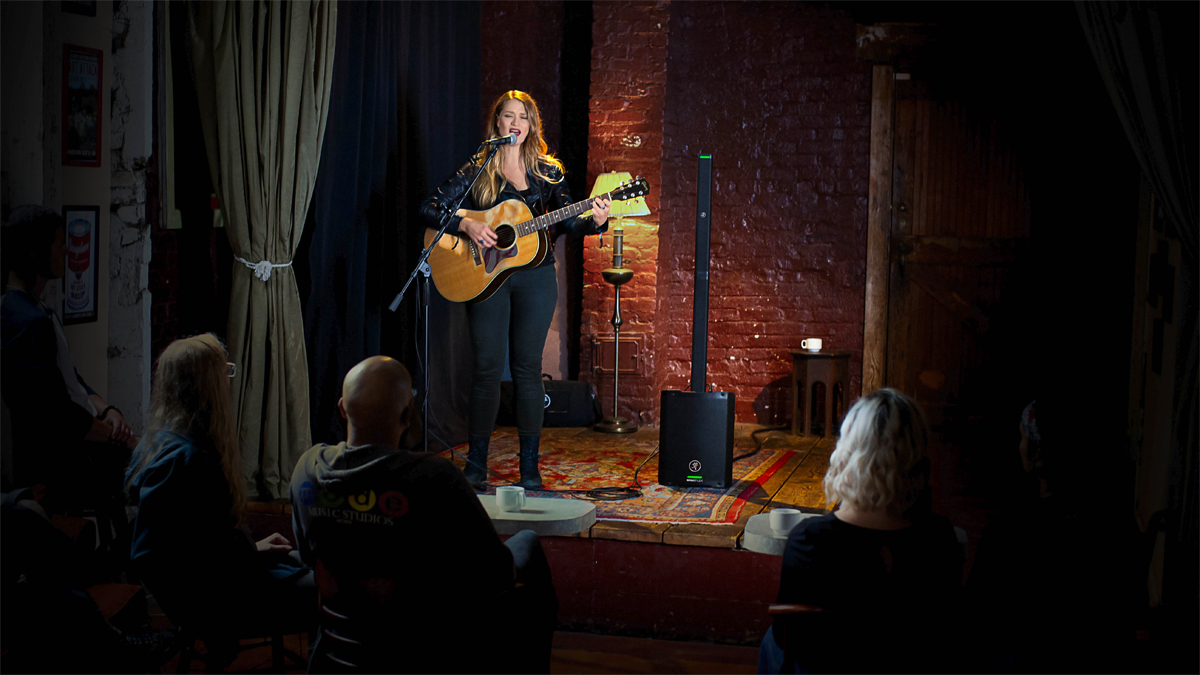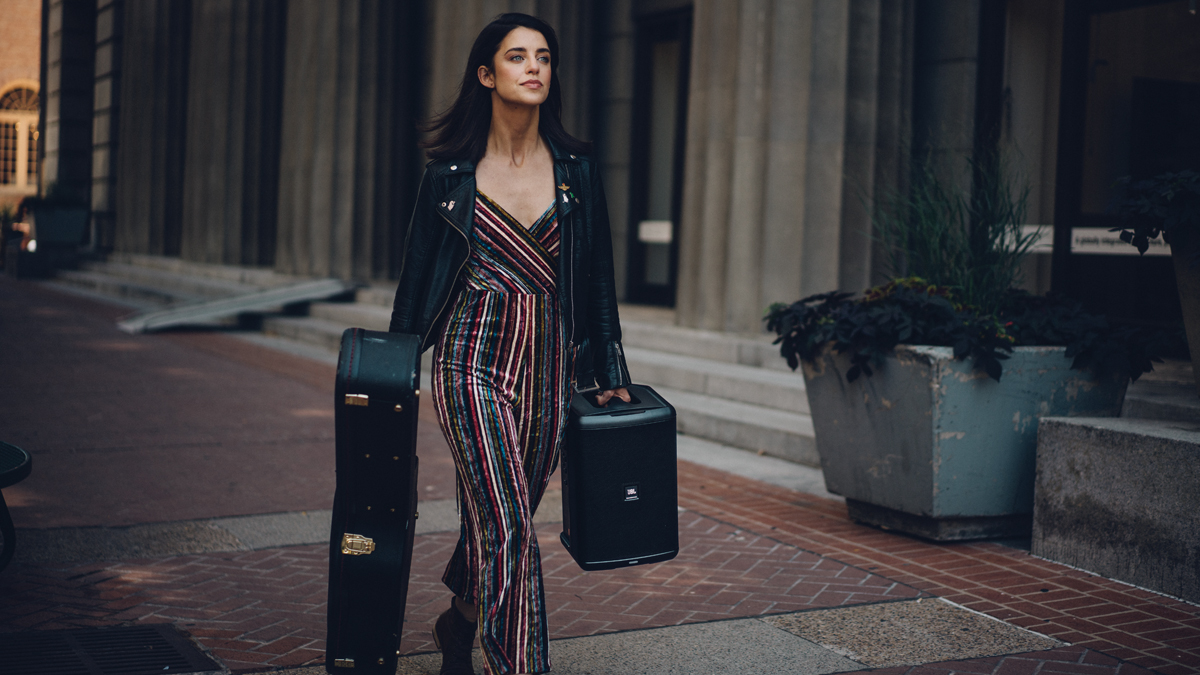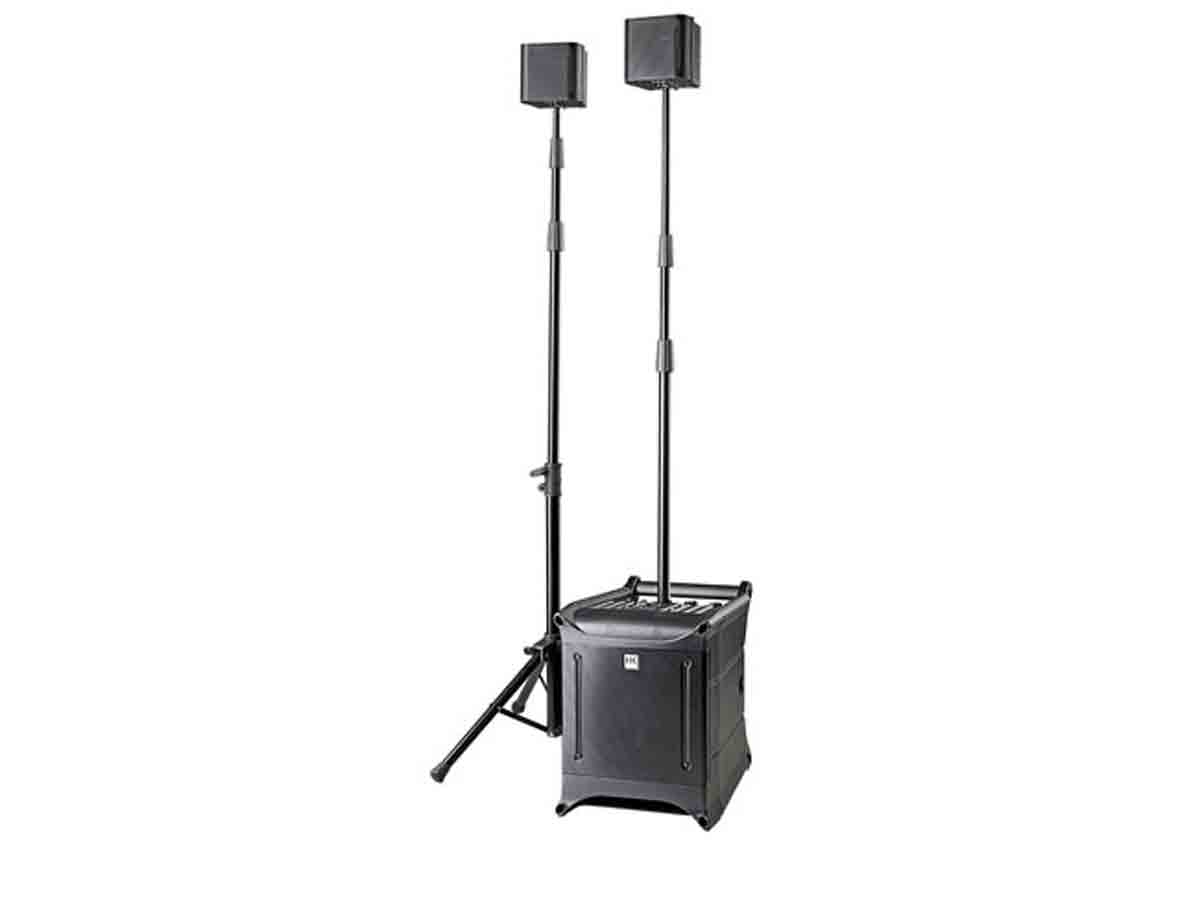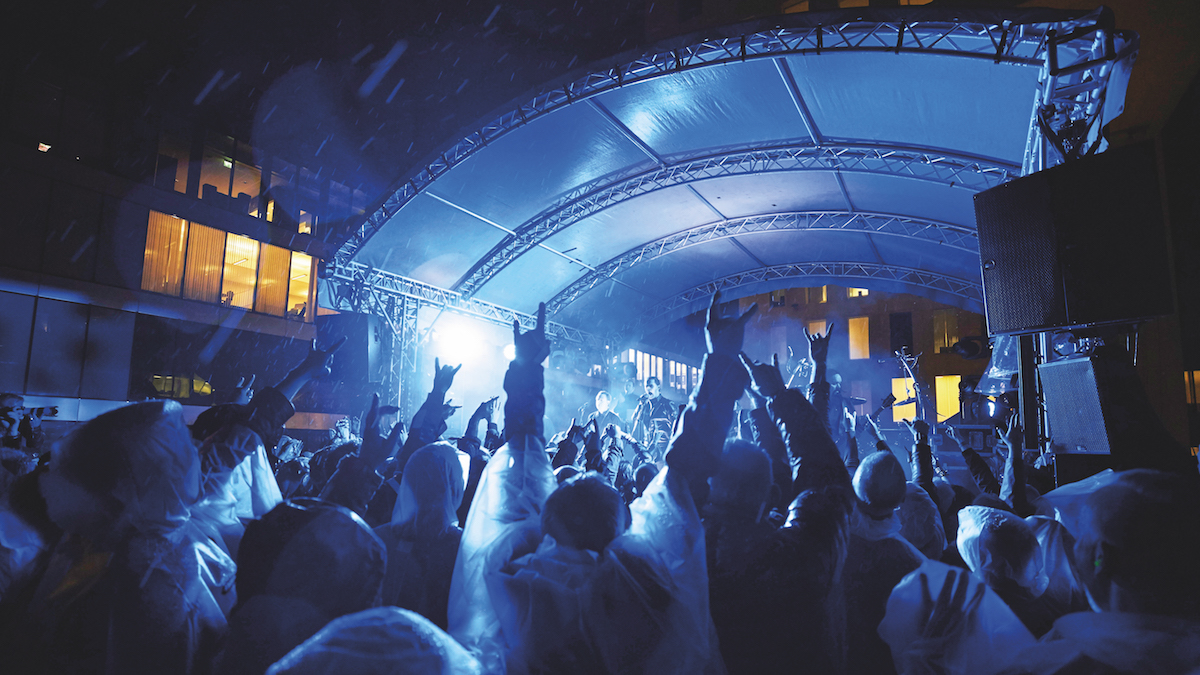6 tips for buying your first PA system
From bands to buskers, take your music to the masses with this guide to choosing a great first PA system

While public address (PA) systems perhaps don’t have the allure of guitar amps, or inspire a performer like a vintage synthesizer, they are as crucial to the live music experience as any other piece of gear.
Arguably more so; without a reliable way of amplifying your sound, your audience won’t hear what you’re playing so it pays to take care when choosing your first PA system. Thankfully they are fairly simple to understand, providing you know what you’re looking for from a PA.
There’s plenty to choose from too, so whatever your requirements are, from battery-powered busking systems to multi-channel, arena-filling full band setups, there will be a PA to suit you and your specific needs.
In this guide we’ll offer some advice on the things to look out for when choosing a PA, from the different sizes and power ratings available, to the extra considerations you should make, rounding up some top tips which should set you on your way.
When you’re ready, take a look at our best PA speakers guide for specific product recommendations.

1. Size matters
As with anything, it makes sense to identify your requirements before you start splashing the cash. After all, the needs of a solo singer-songwriter playing a few tunes in the local coffee shop will be wildly different to a professional wedding band, so you should cut your cloth accordingly. The first consideration will be around how much power you will need. Power, in this context, equates mostly to volume but there’s more to choosing a PA system than wondering how loud it can get.
The standard measurement of power in a PA system is watts and, in the same way as a 100w guitar amplifier is total overkill for a small venue, choosing a PA with a ridiculously high wattage adds unnecessary cost and bulk to your rig. That being said, we’d always advise going (at least a little) bigger/louder than you think you’ll need with a PA, for the simple reason that it’s better to have more juice and headroom available if you need it, than to need a boost and not have it.
Get the MusicRadar Newsletter
Want all the hottest music and gear news, reviews, deals, features and more, direct to your inbox? Sign up here.
In a small to medium sized venue, anything upwards of 1000w should provide enough grunt to make yourself heard, while for solo artists performing low-key shows a smaller 100w – 300w system should be sufficient. Bear in mind, however, that with extra power comes extra size and weight, which is important if you’ll be transporting the system from show to show.
2. How will you use it?

While the PA system itself, and accompanying speakers, is the star of the show it wouldn’t function without some key accessories. We’ve covered the multitude of cables you might come across, but give some thought to the added extras like speaker stands, carrying cases, headphones and spares of every cable you use. And, if you’re using a battery powered portable PA, be sure to have plenty of spares to hand.
While PA systems are essentially simple beasts, you’ll still need to give some thought to how you’ll be using it. At a basic level, you’ll want to make sure there’s enough inputs for your various sound sources in the PA’s mixer, and that the connectivity you need is also on hand. Some systems have Bluetooth or Wi-Fi connectivity, which is great for playing backing tracks but we’d always favour a hard-wired solution if possible as there’s less to go wrong. Likewise, having adequate connectivity to your playback sources is important, whether that involves powered speakers, subwoofers or external recording equipment.
There are countless ways in which a PA system will be used. We’ve touched on musical situations, but PAs are also used by public speakers, DJs, churches, gym classes and many more. Each of these will have their own requirements; a DJ, for example, will need to ensure plenty of low-end heft is available from their system, but a motivational speaker will favour a system that provides total clarity of their speech. Consider the location as an important element too; different spaces will have different natural acoustics, which will have a huge impact on the final sound. If you’re looking for a system you can install in one place, and that place will become its default location, then speaker placement and good mixing capabilities are important factors.
3. Portability
As the size of the venues you’re using the PA in get larger, so too does the required size of the system. This doesn’t matter so much if it’s being placed in a static location, but for live performers who bring their own PA to shows it’s important to consider the portability of your system. This particularly matters for solo performers and buskers, where the PA is both crucial to your rig but also yet another thing to carry around. Thankfully, there are some great options out there for performers in this bracket. From simple, battery powered wedges like the Laney Audiohub Freestyle to all-in-one systems on wheels like the LD Systems Roadbuddy; being on your own doesn’t mean you can’t find a PA to suit your needs.

4. Versatility
Something worth considering is the potential future requirements of your PA system. While you might be a certain sized band, with a fairly consistent setup, it’s always good to keep your options open in terms of how you might wish to grow or develop. Bigger venues, new band members, different equipment; there’s all kinds of ways your needs might change so it’s important you choose a PA system that can evolve with you.
Adding additional speakers is a simple enough way to expand your system, but is dependent on certain things like the mixer and if you have enough spare outputs to facilitate the extra gear. Likewise, adding extra microphones will require additional XLR inputs, so be sure to choose a system that will allow you to grow.
If, on the other hand, your setup is fairly consistent and is unlikely to grow or adapt in the future, you might consider whether a battery powered PA, with the option of mains power if required, might provide the versatility you need.
5. Cost
As we mentioned above, buying your first PA system doesn’t necessarily elicit the same excitement as choosing a new guitar amplifier, for example, but it is still an important ‘milestone’ purchase. As with anything, your budget will dictate a few things, notably the power rating of the system you choose, along with the number of connectivity options and the overall sound quality. But, all things considered, the PA is the vehicle through which your audience will hear you so it’s worth spending as much as you can afford to get the right one for you.

6. Cables and compatibility
The final point to consider is the multitude of connectivity options, and which ones are best for you and the equipment you use. This will be dictated largely by the mixer, so it is worth getting to know the different features and functionality aspects of your chosen model.
Typically, there are four main connection options you’ll find. Microphones are commonly connected using XLR cables, which carry a balanced signal and can provide 48V phantom power for condenser microphones. You’ll also find smaller systems may use XLR connectivity between the mixer and the speakers themselves. ¼” jack cables, like those used for guitars, are fairly common but are usually unbalanced so can be susceptible to noise, particularly over long distances. Speakon cables are rigid and have a twisting lock mechanism to prevent them being pulled out. They are also comfortable carrying higher current signals so are commonly found on higher powered PA systems. Finally, RCA connections can be found for connecting up DJ equipment, and these are capable of true stereo sound.
As we mentioned earlier, it’s increasingly common to find PA systems – particularly portable ones – with Bluetooth connectivity. While this is undeniably handy, it is worth checking whether the system has a 1/8” auxiliary input as a back up in case the Bluetooth starts playing up.
I'm MusicRadar's eCommerce Editor. In addition to testing the latest music gear, with a particular focus on electronic drums, it's my job to manage the 300+ buyer's guides on MusicRadar and help musicians find the right gear for them at the best prices. I dabble with guitar, but my main instrument is the drums, which I have been playing for 24 years. I've been a part of the music gear industry for 20 years, including 7 years as Editor of the UK's best-selling drum magazine Rhythm, and 5 years as a freelance music writer, during which time I worked with the world's biggest instrument brands including Roland, Boss, Laney and Natal.










